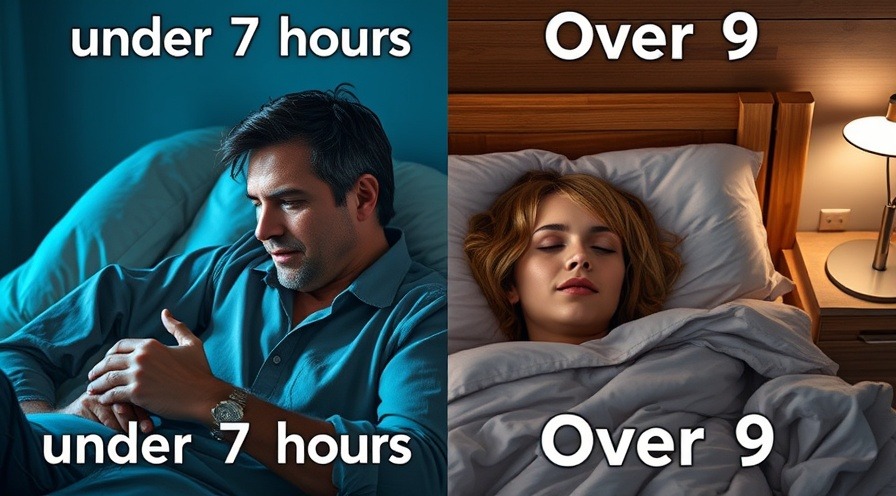
The Science Behind Napping: A Path to Better Health
When considering a quick recharge in the middle of the day, the thought of napping often lingers in our minds. Is it a productivity booster or simply a guilty pleasure? In exploring the science behind napping, we find that it can actually be beneficial for both mind and body, provided it’s done right. This article sheds light on the insights revealed by two knowledgeable doctors in the video, "Are Naps Actually Good for You? The Science Explained," while adding some additional perspectives.
In "Are Naps Actually Good for You? The Science Explained," the discussion dives into the various benefits and science behind napping, propelling us to further analyze its implications for health.
Understanding Napping Patterns
Naps typically fall under different categories based on duration, and understanding these can help you maximize benefits. Short naps, usually between 10 to 20 minutes, are highly touted for their ability to enhance alertness and improve memory. This duration allows you to remain in lighter stages of sleep, enabling you to wake up without the groggy feeling often associated with longer slumbers.
On the other hand, naps ranging from 30 to 60 minutes may lead to sleep inertia—the groggy sensation when waking up from deep sleep—making you feel worse than before. An ideal length for a restorative nap is about 90 minutes, allowing you to complete a full sleep cycle, rich in deep sleep and REM. This not only rejuvenates your body but also sparks creativity and cognitive functionality, supporting what many famous historical figures swore by—like Winston Churchill and Albert Einstein.
Why Timing Matters
Timing is critical when it comes to reaping the full rewards of a nap. According to the doctors, the peak window for napping falls between 1 to 3 p.m., coinciding with a natural dip in our circadian rhythm. Napping during this time minimizes disruptions to your regular nighttime sleep schedule, making it easier to fall asleep when night comes. If you indulge in an afternoon snooze, be mindful not to cross the threshold of late afternoon, as it could hinder your ability to wind down later.

Practical Tips for Effective Napping
For those interested in incorporating naps effectively into their schedules, consider these tips:
Choose Your Environment: Find a quiet, dark space. Setting the right mood can greatly influence the quality of your nap.
Power Nap Style: Aim for 10 to 20 minutes to revitalize without getting caught in deep sleep.
Cooling Down: Maintain a cool room temperature as it helps trigger sleepiness and enhance comfort.
Incorporate Naps into Your Life
For busy individuals, the art of napping might seem elusive, but embracing it could be a game-changer for your health. The short bursts of rest can help you stay alert and focused, empowering you to achieve more throughout the day. Opting for a strategic nap doesn’t just enhance productivity—it can bring a sense of well-being that benefits your overall lifestyle.
Final Thoughts: Listen to Your Body
In a world that often glorifies hustle over rest, it’s essential to listen to your body’s signals. Naps, when used wisely, can serve as a potent tool in your wellness arsenal. As shared by the doctors, they may not replace essential nighttime sleep, but they can certainly help bridge the gap when needed.
If you’re inspired to explore the pleasant side of napping, perhaps it’s time to carve out some time in your day for a quick recharge. Whether you’re a busy professional or a parent juggling multiple tasks, embracing this simple practice could enhance your health and well-being.
For further insights, remember to stay connected with professionals who can guide you on your wellness journey. After all, you are in charge of your health!
Disclaimer: The information provided on this website is for general informational purposes only and should not be considered medical advice, diagnosis, or treatment. Always consult a qualified healthcare professional before making any decisions or taking actions related to your health, including but not limited to medical conditions, treatments, diets, supplements, or exercise programs. The content on this site is not intended to replace professional medical guidance. The website and its authors are not responsible for any actions taken based on the information provided.
 Add Row
Add Row  Add
Add 




 Add Row
Add Row  Add
Add 

Write A Comment